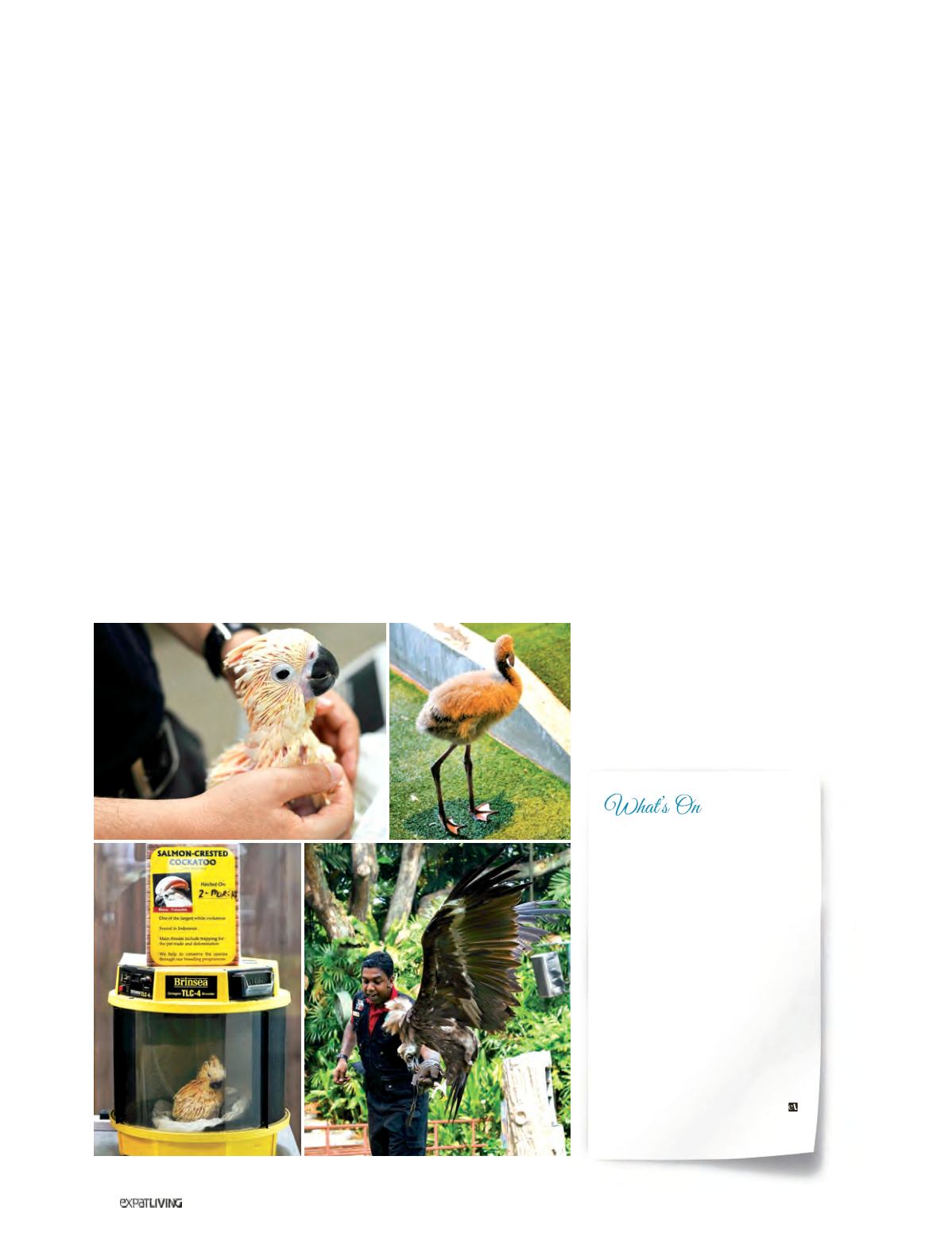

LIFE&FAMILY
138
June14
Running hand-in-hand with the public
exhibits and fun shows is the breeding
and conservation programme. “A major
role of zoos nowadays is to maintain
a sustainable population of species.
This contributes to their conservation,
increases the genetic diversity of
our bird populations and preserves
adequate numbers of birds to breed
and exchange with other zoos,” he says.
Luis has poured boundless energy
and resources into the Park’s successful
programmes. “We’re getting good
results from our focus on breeding
regional species under threat,” he says.
“Only a hundred Bali mynahs (a type of
starling) are left in the wild, but the Bird
Park has successfully bred five chicks
since January.”
After a two-year breeding programme,
ten Luzon bleeding-heart pigeon
progeny are expected to be sent back
to the Philippines and released on Polillo
Island soon. This threatened species is
declining due to deforestation and the
illegal pet trade.
The Park is a designated aviation
rescue centre, too; confiscated or
donated birds end up here. “Someone
will buy a big bird like a macaw and find
it too noisy, demanding and distracting,
so they bring it to us. Native species can
be released back into the wild, but we
keep exotics, or organise an exchange
with other zoos, including ones in San
Diego, the Bronx and Berlin,” he says.
Of the eight rooms in the breeding
centre, the quietest are the temperature-
and humidity-controlled incubation
rooms. The noisiest, on the other hand,
are the weaning rooms, where birds of
different species learn how to socialise
with one another. In one room, young
flamingos strut their stuff.
In another, a dozen four-month-old
parrots, including a blue-eyed cockatoo,
a palm cockatoo and a hyacinth macaw,
cavort and squawk noisily in individual
cages.
“The birds are here to socialise, and
doing it at this early age helps with their
development. We are not rearing pets
here,” says Luis. “They are captivity-bred
wild birds, and at this age learning how
to be native parrots.” He also explains
that research has shown cockatoos
to be as intelligent as four-year-old
children. “They have a sense of self, can
solve equivalent puzzles, can recognise
difference, can mimic, and quickly learn
how to get attention,” he says.
And what is Luis’s favourite bird? “I’m
fond of penguins – and, as a group,
parrots are one of my favourites. They’re
intelligent and each species has very
individual characters and personalities.
Macaws are like independent cats,
whereas cockatoos resemble dogs –
they’re needy, they scream for attention,
are demanding and, like most of the
larger species of parrot, can live into
their 70s. Before you consider a parrot
as a pet, remember they are a lifetime
commitment, much more so than a dog.
A parrot is with you for the rest of your life.”
•
3-Day Bird Quest Camp
(4 to 6
June) is an up-close encounter
with our feathered friends that
offers hands-on bird-keeping
experiences, reveals the secrets
of nest-making and includes
lessons in feathers and flight.
• At the
Junior Avian Keeper
workshop on 11 June, learn
what keepers do and find out
how birds are kept in the best
of health – but be prepared to
get dirty and rough it!
• Feeding sessions and live
shows are all open to the public.
Book for guided tours and
behind-the-scenes sessions.
birdpark.com.sg



















